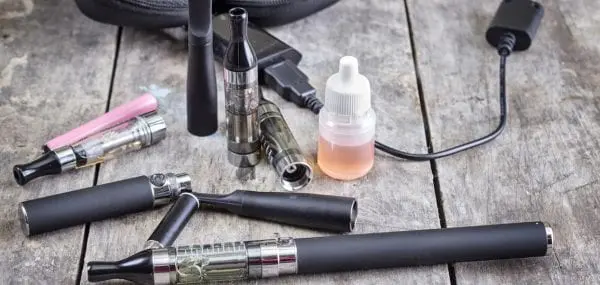Over the past 18 years that Emily Denbow Morrison has been teaching high school English, she has seen firsthand the widespread growth of vaping addiction among her students.

“It used to be considered an ‘out of sight, out of mind’ problem for our teens. Now it’s a ‘within sight, on our minds’ issue in our schools,” she says. When a student asks to go to the bathroom, Morrison wonders whether that student really needs to use the facilities or is taking a break to vape.
Who is Vaping?
Vaping is not an issue only for high school students. Gary White, the associate director of the Hillsborough County Anti-Drug Alliance (HCADA) in Florida, provides vaping and tobacco education to students who have been cited per state statutes. The youngest student he has worked with was only nine. Recently, the organization worked with a 10-year-old boy who had been caught with 12 Juuls in school. (Juul is a popular brand of e-cigarette.) “When he attended our class, we questioned why he had so many Juuls,” says White. “His reply was, ‘A man at my apartment gave them to me. He said he’d pay me a part of the money I made when I sold them.’
Connection to Delinquent Behavior
The HCADA works with as many as 12 students a month who have been cited for vaping. Among the students they work with, White says they routinely hear of kids who vape also engaging in disruptive behaviors. This behavior includes acting up in class and using other drugs.
White’s experience corroborates a recent study published in the Journal of Criminal Justice that examines e-cigarette use among 8th and 10th grade students nationwide and its connection with delinquent behaviors like violence, property theft, vandalism, trespassing, and running away from home.
The key author of that study, Dylan Jackson, a criminal justice professor at the University of Texas at San Antonio, used a sample from the 2017 Monitoring the Future study. MTF is an ongoing survey of behaviors, including substance use, of American adolescents and adults. The MTF study surveys 8th, 10th, and 12th-graders, as well as college students and young adults, to determine changes in behaviors over several years’ time.
Many past studies have found links between drug use and delinquent behavior.
However, Jackson’s findings suggest there is an even stronger link between vaping and delinquency than with traditional substance use.
Additionally, Jackson’s study suggests that teens who vape marijuana are at a much greater risk of engaging in delinquent behavior than those who vape flavored nicotine or who consume illegal substances through traditional means.
Easy to Conceal
Jackson argues the link between vaping and delinquency might result from the ease of concealing illegal substances through vaping devices. That ability to conceal illicit behavior might give teens the feeling they can get away with other delinquent behaviors.
Jackson says he conducted his research in order to raise awareness among policymakers, parents, and others. “The growing trend of adolescent vaping is not simply unhealthy—or worse, an innocuous pastime,” he says. “It may in fact be a red flag or an early marker of risk pertaining to violence, property offending, and other acts of misconduct.”
A New Epidemic
Whether vaping is an early marker for delinquency, lawmakers and parents are concerned about what experts view as an epidemic. According to the Centers for Disease Control and Prevention, the use of e-cigarettes among high school teens increased by more than 75 percent between 2017 and 2018.
In the past year, both lawmakers and retailers have been working to reduce teen vaping through a variety of measures. But a recent study in JAMA Pediatrics reveals findings from an undercover study in California showing about half of tobacco and vape shops sold products illegally to teens. This is despite a state law raising the minimum age to purchase tobacco to 21.

Despite the potential health risks and efforts to reduce teen vaping, it doesn’t look like the trend will be going away anytime soon. Which means, for teachers like Morrison, in-service days now include time with the police department learning about vaping paraphernalia and the warning signs of vaping addiction. We parents also need to stay aware and educated and talk to our kids about the harmful impact of vaping.




